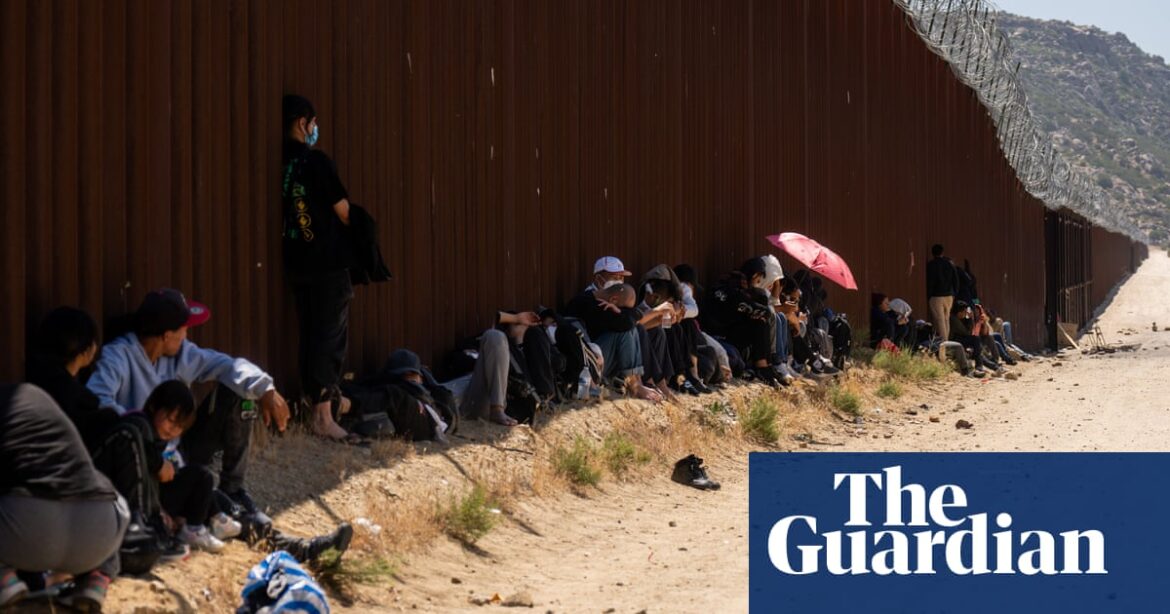
Ten times as many migrants died in New Mexico near the US-Mexico border in each of the last two years compared with just five years ago.
During the first eight months of 2024, the bodies of 108 presumed migrants, mostly from Mexico and Central America, were found near the border in New Mexico, according to the most recent data. Many of the bodies were discovered less than 10 miles (16km) from El Paso.
In 2023, the remains of 113 presumed migrants were found near the state’s border with Mexico. In 2020, nine bodies of were found. In 2019, there were 10.
It is not clear exactly why so many more people are succumbing in that area, but many experts say smugglers are treating migrants more harshly and bringing them on paths that could be more dangerous in extreme summer temperatures.
The influx has taxed the University of New Mexico’s medical investigator office, which identifies the dead and conducts autopsies. Almost all of the deaths show the cause is heat-related, the office said.
“Our reaction was sadness, horror and surprise because it had been very consistently low for as long as anyone can remember,” said Heather Edgar, a forensic anthropologist with the office.
Serving the entire state, the office over two years has added deputy medical investigators to handle the extra deaths on top of the usual 2,500 forensic cases.
“We’d always had three deputies down in that area, and I think we have nine or 10 now,” Edgar said of New Mexico’s eastern migration corridor.
Immigration and border security are among voters’ top concerns heading into the 5 November presidential election, but the candidates have focused on keeping migrants out of the US and deporting those already here.
But the rising deaths pose a severe humanitarian concern. “People are dying close to urban areas, in some cases just 1,000ft from roads,” noted Adam Isacson, an analyst for the non-governmental Washington Office on Latin America. He said water stations, improved telecommunications and more rescue efforts could help.
Officials say they are targeting human-smuggling networks. US Customs and Border Protection added a surveillance blimp to monitor the migration corridor near its office in Santa Teresa, in New Mexico’s Doña Ana county. And it relies on movable 33ft (10-meter) radar towers to scan the area. US officials in recent years have added 30 more push-button beacons that summon emergency medical workers along remote stretches of the border at New Mexico and western Texas. And they have set up more than 500 placards with location coordinates and instructions to call 911 for help.
This summer, the border patrol expanded search and rescue efforts, dispatching more patrols with medical specialists and surveillance equipment. The agency moved some beacons closer to the border, where more people have been found dead or in distress.
Border patrol says it rescued nearly 1,000 migrants near the US border in New Mexico and western Texas over the past 12 months – up from about 600 the previous 12 months.
Civilians organizations are ramping up their efforts, too. Dylan Corbett, executive director of the faith-based Hope Border Institute in El Paso, said 10-member church teams recently started dropping water bottles for those in the deadly New Mexico corridor alongside fluttering blue flags.
“Part of the problem is that organized crime has become very systematic in the area,” Corbett said of the increased deaths. But Corbett also blamed heightened border enforcement in Texas and new US asylum restrictions introduced by Joe Biden in June and tightened last month.
after newsletter promotion
New Mexico’s rising deaths come as the human-caused climate crisis increases the likelihood of heatwaves. This year, the El Paso area had its hottest June ever, with an average temperature of 89.4F (32C). 12 and 13 June saw daily record highs of 109F.
Those high temperatures can be deadly for people who have been on strenuous journeys. Some smugglers lead migrants on longer routes into gullies or by the towering Mount Cristo Rey statue of Jesus Christ that casts a shadow over neighboring Mexico.
Juan Bernal, the El Paso sector’s interim deputy chief border patrol agent, said migrants were weak when they arrive at the border after weeks or months without adequate food and water in houses smugglers keep in Mexico.
“They’re expected to walk, sometimes for hours or days, to get to their destination where they’re going to be picked up,” he said.
Nearly half of those who died in New Mexico this year were women, with women aged 20 to 29 making up the largest segment of these deaths.
Adding concern is that the deaths have continued even as migration has fallen along the entire border following Biden’s major asylum restrictions.
New Mexico’s migrant death numbers now rival those in Arizona’s even hotter Sonoran desert, where the remains of 114 presumed border crossers were discovered during the first eight months of 2024, according to a mapping project by the non-profit Humane Borders and the Pima county medical examiner’s office in Tucson.
“It should not be a death sentence to come to the United States,” Maj Jon Day of Doña Ana county sheriff’s office, told a recent community gathering. “And when we push them into the desert areas here, they’re coming across and they’re dying.”
Source: theguardian.com



